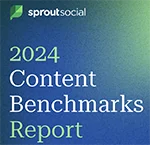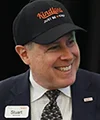 |
| Ronn Torossian |
In spite of the backlash last year in which some brands either suspended or stopped advertising on Facebook, the social media platform still enjoyed an increase in advertisers. For the third quarter of 2020, 10 million active brands were advertising on Facebook, up from seven million in the first quarter of 2019, according to data from Statista.
Even more telling was a July 2020 survey by Morning Consult reporting that only 33 percent of those polled had a favorable view of the brands that participated in the boycott. 20 percent had no opinion while 41 percent said a firm’s decision to boycott would have no bearing on their feelings for the brand.
In response to growing criticism—especially during a hotly-contested presidential election— Facebook banned the publication of misinformation, posts advocating violence and even took steps to improve consumer data privacy. Whether those actions had any bearing on or were a reaction to Morning Consult’s findings is unknown.
The fact is that Facebook remains one of the most popular platforms today with more than 233 million users in the U.S. alone, which marketers can’t afford to ignore. Unlike other platforms, Facebook appeals to all demographics. What other platform can attract 62 percent of seniors while appealing to 76 percent of Generation Z? Data from SocialPilot also disclosed that an even larger demographic on Facebook is Gen Y (1980s to early 1990s).
An additional appeal to marketers is Facebook’s low budget approach in gathering leads through its lead ads. These are forms which brands ask consumers to complete in exchange for product trials, subscriptions, free ebooks, contest registrations, etc.
A WordStream study to determine a Facebook benchmark across 17 major industries found the average conversion rate across all industries to be about nine percent. Healthcare was the highest with more than 14 percent conversion, followed by education, employment/job training and real estate. The bottom three were retail (3.26 percent), travel and hospitality (12.8 percent) and technology (2.31 percent).
Another benefit is custom audience targeting. There are tools available that allow marketers to target consumers based on their relationship with a brand. Variables such as being a past customer, app downloads, previous engagement with the brand and website visits are some of the factors that can be targeted and tailored.
But demographics alone don’t apply to each generation or individual shopper. Knowing more about customers like their interests, beliefs, inspiration, behavior and other particular psychological attributes can help marketers personalize and strengthen their communications with customers more and enhance chances of even greater success.
Facebook may be the only platform that allows marketers to move consumers through every stage of their funnel, from awareness to consideration and finally, conversion or sale. By employing different ads based, in part, by the psychographic targeting, brands can deliver ads that resonate through each stage of the buyer’s journey.
On the back end, two of Facebook’s tools deliver valuable data to marketers. The analytics section gives marketers a deeper insight into content performance, referral traffic, audience insights, and profile engagement. While the Ads Manager helps determine ad performance and ROI through metrics like CTR (click through rate), CPA (cost per action) and CPC (cost per click).
Finally, in terms of customer communication, brands always have the opportunity to nurture their connection with customers and groups in the comment section for their thoughts, experience and feedback.
***
Ronn Torossian is CEO of 5WPR, one of America’s leading PR firms.


 What if companies could harness the fury of online outrage into a force for good? This is precisely where companies can start turning the trolls into brand champions.
What if companies could harness the fury of online outrage into a force for good? This is precisely where companies can start turning the trolls into brand champions. Audiences interacted with brand content far more often on Facebook and Instagram in 2023 than they did via X (formerly Twitter), according to a report that tracked engagement trends across different social networks.
Audiences interacted with brand content far more often on Facebook and Instagram in 2023 than they did via X (formerly Twitter), according to a report that tracked engagement trends across different social networks. Can public relations help counteract the dissension fostered by the power of digital platforms to spread hate, fear and confusion?
Can public relations help counteract the dissension fostered by the power of digital platforms to spread hate, fear and confusion? The number of Americans who get their news from TikTok has quadrupled in the last three years, according to a recent Pew Research Center report.
The number of Americans who get their news from TikTok has quadrupled in the last three years, according to a recent Pew Research Center report.


 Have a comment? Send it to
Have a comment? Send it to 
No comments have been submitted for this story yet.